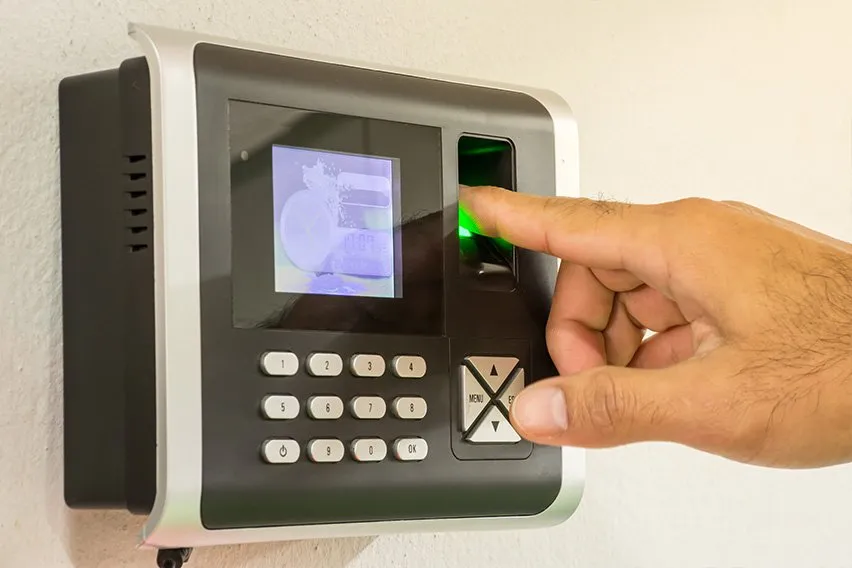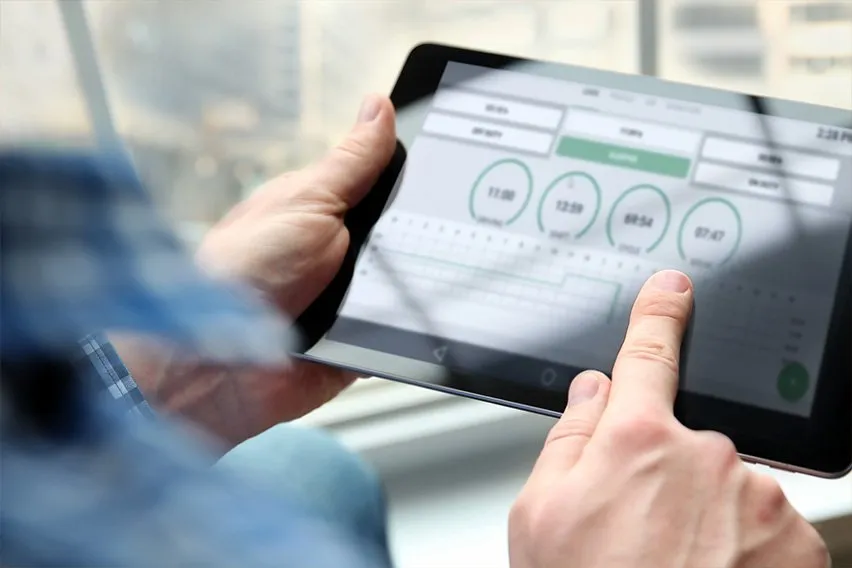How to Keep Track of Employee’s Hours?

To track employee hours, you can record their work hours manually every day, record it with time clocks or use time tracking software to check when your employees clock in and clock out.
While time tracking of employees is mandatory for businesses that bill their clients on an hourly basis, it also provides useful insights into employee productivity and efficiency for companies with a different business model. According to the Harvard Business Review, untracked work hours could be costing the economy 7.4 billion dollars per day. Tracking employee hours can have a huge impact on the business.
What this article covers:
How to Track Employees Daily Activities?
How to Track Employee Hours?
The Federal Labor Standards Act says that businesses must track employee hours and the wages an employee earns. While there is no specification of how to track the employee hours, the data must include the time and day that an employee’s workweek begins, the hours worked each day and the total hours worked each week.
Best Methods to Track Employee Time
When it comes to tracking times, employers have a variety of options to choose from.

Paper Timesheets
This system entails manually logging in the hours in a spreadsheet and notebook. This seems like an outdated approach of tracking employee hours, but it’s still widely used by small businesses due to its simplicity and cost-effectiveness.
Unfortunately, this system is fraught with errors and can be extremely time-consuming for the management. One of the common problems with manual logs is legibility. If the writing in these logs is difficult to read, the employee might not get paid in time. In some instances, the employee might falsify the data or record it incorrectly.
The lack of electronic time logs can also make it difficult for businesses to deal with pay disputes with employees.
Time Clocks
While they may be superior to manual reporting, time clocks vary in levels of sophistication and accuracy. While simple punch machines are inexpensive, they’re also prone to misuse and much more difficult to maintain and upgrade the hardware.
On the other hand, wall-mounted card swipes, biometric scanners and pin entry provide significantly more sophistication and accuracy. These systems are usually set up to send and receive data to an incorporated software system.
Small businesses which are planning to use these systems have to consider the cost of the hardware and software, staff training, ongoing maintenance and troubleshooting.
Time Tracking Software
Whether you are a small business with a few employees or a large organization, cloud-based time tracking software provide simple solutions for entering hours and quickly routing time for approvals. To further understand how to track time with such software, you might find our video tutorial helpful. Most of these solutions also integrate seamlessly with payroll apps and saves hours of manual data entry.
Not only is this easy to set up and use, but it also offers employees the flexibility to punch in and out from different devices such as computers, wall-mounted tablets and even their phones. This system eliminates errors caused by manual calculations as the time cards are automatically calculated and sent to payroll.
This is also the perfect option for freelancers and employees that are working from home or aren’t confined to one building or office for work.
While none of these systems are perfect, what makes time tracking software the best method of tracking employee hours is that it goes beyond just tracking employees’ times of arrival and departure.
Time tracking software gives business owners an overview of the entire business and how employees are spending their time. This is useful when it comes to streamlining things, rearranging projects, assigning tasks, etc. If you bill clients by the hour, the software ensures that clients are billed the right amount.

How to Track Employees Daily Activities?
The daily activities of employees can be tracked through activity logs and checklists.
Time tracking software runs securely in the background on your devices and allows you to track the employee hours spent on applications and websites, thus giving you an accurate picture of the day. You can also generate reports and data based on this activity.
Certain apps also allow you to manually track time. You can start the timer when you begin your task and stop it when you’re done.
Businesses also monitor employee activity to track productivity, improve inefficiency and maintain their reputation.
Internet usage
Many companies monitor employee activity online such as the time spent by employees browsing online shopping sites. They may also restrict employees from visiting websites with unquestionably inappropriate content and other questionable sites.
Phone
Phone calls with clients, prospects, users and suppliers may be recorded for providing customer support statistics. Most companies, however, limit themselves to monitoring which numbers employees are calling and how much time they’re spending on the phone to avoid phone misuse.
Monitoring email messages help companies anticipate problems before they crop up and also helps in settling disputes.
GPS and Location Tracking
For businesses that provide field service, it’s common to use GPS in vehicles and sensors in phones to track employee whereabouts.
Other ways in which employees monitor employee communication is through computer screen recording and audio/video surveillance
While employee hour tracking does offer numerous benefits such as more transparency, better delegation and better insights about employee performance and productivity, it can affect the morale of the employees due to the perceived lack of privacy and high stress.
It’s important for businesses to be transparent about their monitoring policies and respect employee privacy to avoid workplace conflicts and do more productive work.
RELATED ARTICLES


 How to Invoice as a Sole Trader: Guide and Example
How to Invoice as a Sole Trader: Guide and Example What Is a Time Log? Time Tracking Basics
What Is a Time Log? Time Tracking Basics How to Create a Training Program for Employees in 5 Easy Steps
How to Create a Training Program for Employees in 5 Easy Steps How to Measure Team Effectiveness: Top 5 Ways
How to Measure Team Effectiveness: Top 5 Ways 11 Construction Apps Builders Must Try In 2025
11 Construction Apps Builders Must Try In 2025